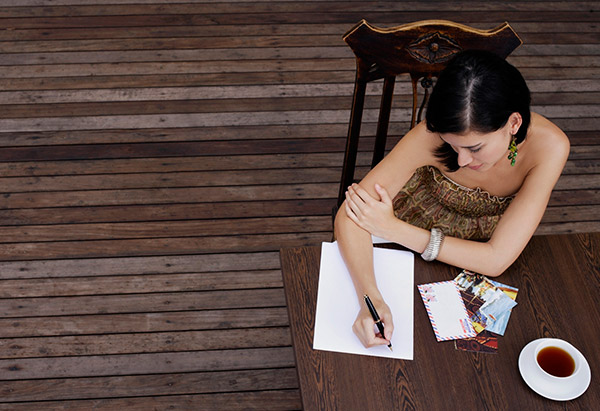What's Your Best Problem-Solving Approach?
The answer may be hidden in your imagination.

Photo: Thinkstock
Part 1: Think of a dilemma you're currently facing.
Now quickly push it aside and switch mental gears: Imagine you're walking through a park when you come to a hole in the ground blocking your path. On a piece of paper, sketch a scene that illustrates how you manage to continue on your way.
"When you draw yourself solving a problem, you call on your creative strengths," says Lynn Kapitan, PhD, therapist and executive editor of the academic journal Art Therapy. "Instead of thinking, I can't do this, you imagine what you can do—and realize you have strategies hidden within."
Part 2: The way you drew yourself getting past the hole—whether on a tree-branch bridge or in a hot-air balloon—may give you new perspective on getting past the obstacle you're facing in real life. Kapitan suggests asking yourself these simple questions about your picture:
Q: How big is the hole? If it's more like a ditch than a canyon, maybe your real-world problem isn't as severe as you thought.
Q: Did you use the environment around you to get across the hole? If so, you might benefit from the support of friends, family, or a counselor as you tackle your problem. If you relied on yourself, try to identify any coping skills you take for granted (the ability to stay levelheaded, for example, or to find humor in any situation); they might serve you now.
Q: Did you draw your picture quickly? If you were guided by instinct, you may prefer to trust your gut. But if you took time to think, you might want to learn more about your problem before you proceed.
Q: Did you end up taking a risk, a leap of faith? Bold action just might move you closer to your goal.
More Ways to Break Free
Now quickly push it aside and switch mental gears: Imagine you're walking through a park when you come to a hole in the ground blocking your path. On a piece of paper, sketch a scene that illustrates how you manage to continue on your way.
"When you draw yourself solving a problem, you call on your creative strengths," says Lynn Kapitan, PhD, therapist and executive editor of the academic journal Art Therapy. "Instead of thinking, I can't do this, you imagine what you can do—and realize you have strategies hidden within."
Part 2: The way you drew yourself getting past the hole—whether on a tree-branch bridge or in a hot-air balloon—may give you new perspective on getting past the obstacle you're facing in real life. Kapitan suggests asking yourself these simple questions about your picture:
Q: How big is the hole? If it's more like a ditch than a canyon, maybe your real-world problem isn't as severe as you thought.
Q: Did you use the environment around you to get across the hole? If so, you might benefit from the support of friends, family, or a counselor as you tackle your problem. If you relied on yourself, try to identify any coping skills you take for granted (the ability to stay levelheaded, for example, or to find humor in any situation); they might serve you now.
Q: Did you draw your picture quickly? If you were guided by instinct, you may prefer to trust your gut. But if you took time to think, you might want to learn more about your problem before you proceed.
Q: Did you end up taking a risk, a leap of faith? Bold action just might move you closer to your goal.
More Ways to Break Free



